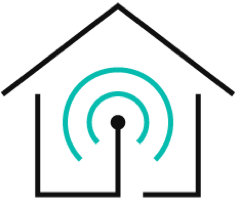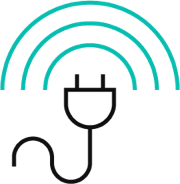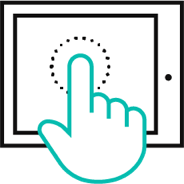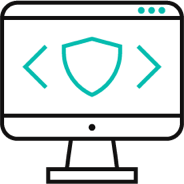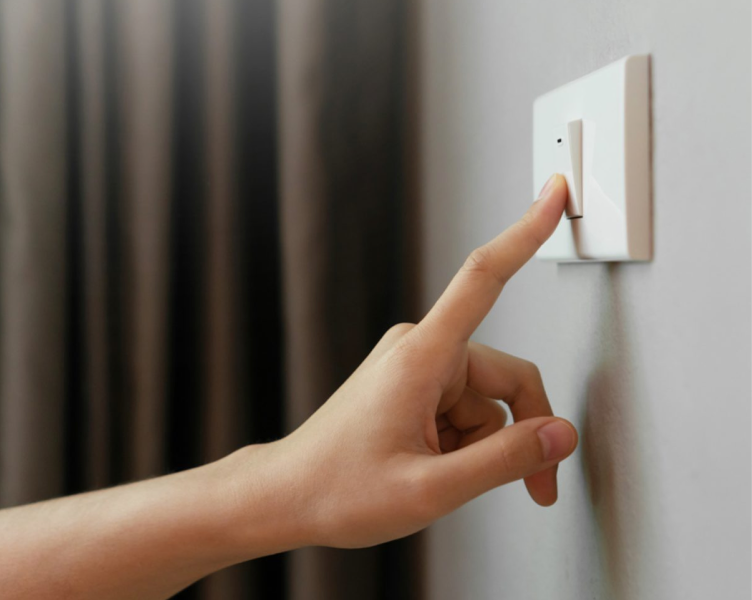One of the most famous sellers in the smart home sector is Apple HomeKit. It still controls a substantial portion of the home automation market, despite falling behind competitors like Amazon Alexa and Google Home in popularity and adoption rates.
Unfortunately, many individuals are reluctant to adopt HomeKit due to misconceptions and a lack of understanding of the HomeKit environment. We'll be addressing some important questions concerning the Apple HomeKit in case you've thought about using it but are unsure of the ins and outs of the ecosystem.
In addition to Apple, Evvr offers exceptional solutions to its customers, allowing them to connect and control light switch through Evvr HomeKit In-Wall Relay Switch !
- Apple HomeKit Brass Tacks
- Scope of Apple HomeKit
- Compatibility With Gadgets
- Bridging Non-Compatible Devices
- Getting Started With Apple HomeKit Ecosystem
- Using iPad As A Smart Home Hub
- Setting Up iPad As The Brain Center of Your Smart Home.
Apple HomeKit Brass Tacks
An Apple device can connect and manage your smart home gadgets with the help of the home automation framework known as Apple HomeKit. HomeKit, introduced in 2014 as a component of iOS 8, is Apple's response to Google Home and Amazon Alexa, two equally well-liked home automation frameworks that serve a similar purpose as HomeKit.
As long as the device is compatible with the HomeKit ecosystem, HomeKit enables you to utilize a device like an iPhone or iPad to operate your smart window treatments, lightbulbs, or other smart home accessories. Apple HomeKit is not drastically different from other smart home ecosystems if you have any knowledge of them. However, it has some distinctive characteristics, and if you'd want to read more about those, we've already written an in-depth analysis of the Apple HomeKit.

Scope of Apple HomeKit
Apple HomeKit primarily enables home automation and compatibility between your smart home devices. Imagine it as a back-end system that enables you to utilize an Apple device, such as an iPhone, iPad, iPod touch, MacBook, or Apple Watch, as a universal remote control for your smart home appliances.
HomeKit offers more than only transforming your Apple devices into a remote control for your smart home. It also acts as the connecting element between all of your smart home technology. Let's imagine that you purchase a smart door sensor for your house. Purchase a set of smart light bulbs after that. Most likely, these two sets of appliances will function separately.
HomeKit can offer a platform to enable interoperability, though. This implies that you may use the door sensor on your door, which senses when the door is opened or closed, to turn on or off your smart lights. Of course, HomeKit is more than just smart lightbulbs and door sensors. You can make smart devices that are HomeKit compatible and of the smart kind interoperable. HomeKit offers a vast array of opportunities.
Compatibility With Gadgets
Of course, smart home devices must be compatible for HomeKit to function as intended. But which gadgets are HomeKit compatible?
A wide range of household appliances, including security cameras, air conditioners, air humidifiers, and light bulbs, are compatible with HomeKit.
The phrase "HomeKit Compatible" is typically printed on most HomeKit-compatible products. When you see this, it signifies that once you've connected an Apple device to your home's HomeKit ecosystem, you'll be able to control and possibly even make those devices interoperable.
Bridging Non-Compatible Devices
There is still hope if you want to purchase smart home products, but they are not HomeKit compatible. Utilizing a smart home bridge allows you to still partake in some HomeKit compatibility. As the name suggests, a smart home bridge is a middleman to connect your incompatible smart home device to HomeKit. You might accomplish it with Evvr Center and Evvr Center Lite, two smart home technologies.
Then there is Matter, a future smart home interoperability standard that aims to dismantle the compatibility barrier between rival smart home ecosystems. So in due time, you won't need to worry as much about whether your new smart device is HomeKit compatible.
Getting Started With Apple HomeKit Ecosystem
Apple HomeKit isn't a single product, despite how it might sound. Your iPhone or MacBook already contains a component of the HomeKit ecosystem.
You'll need some Apple gadgets, or at the very least an iPhone or an iPad, to start using HomeKit. You can start the setup procedure using the Home app from this point. For your HomeKit smart home, the home app will do the bulk of the work.
You'll need to purchase a few HomeKit-compatible items to start, so that goes without saying. Using your iPhone, you normally need to scan an eight-digit HomeKit code on the product. When the product is successful, it will be put into your home app, and you can use it for automation.
Using iPad As A Smart Home Hub
You'll need a hub, such as an iPad or an Apple TV, to get the most out of HomeKit. Using an iPad as a smart home hub may seem like an outlandish idea, but it is not. Once a hub is involved, it takes on the role of the brain or the core of your HomeKit setup. Once an Apple HomeKit hub has been configured using a hub device like the iPad, you may easily use voice commands to start an automated program. "Hey Siri, turn out the living room lights."
Setting Up iPad As The Brain Center of Your Smart Home.
Here is a simple guide on how to set up your iPad as a smart home hub to monitor and control HomeKit devices in your home.
- Open the Settings application on your iPad or iPhone.
- Click Home after swiping down.
- Turn the switch next to "Use this iPad as a Home Hub" to the green ON position.
In the Home app on your iOS device, you can monitor the connection status of your home hub. In the top-left corner of the screen, tap the Home symbol. (If you've set up more than one home, touch Home Settings after that, then tap a home.) To check if your home hub is linked, look under Home Hubs.
You must enable two-factor authentication on your iCloud account after configuring your home hub; otherwise, you won't be able to access your HomeKit accessories remotely.
Now that everything is set up, you may use Siri on your iOS device to activate actions the next time you're away from home. The type of actions that are triggered will depend on the accessories you have installed.
A few ideas include "Turn on the living room light" and "Open the garage door." For instance, you might also ask Siri to check the thermostat's temperature. You can see Apple's list of all HomeKit-compatible gadgets, which is frequently updated.
FAQs of iPad Hub
- Can I use Apple HomeKit without a dedicated smart home hub?
You will need a type of Apple home hub to use HomeKit outside of your house. A HomePod or HomePod Mini is also feasible if you don't have an Apple TV. Note: A HomePod or HomePod Mini is needed to use built-in Siri on the Smart Thermostat Premium or a smart thermostat with voice control.
- Can an iPhone work as a smart home hub?
HomeKit allows you to run a smart home entirely through Apple's Home app without needing a central hub or device. Only an iPhone, iPad, or Mac will do; however, adding a hub like an Apple TV or a HomePod Mini will unlock some fantastic capabilities.
- What is the best device to use as a HomeKit hub?
The HomePod small from Apple is the ideal component for your HomeKit smart home setup. Apple's smart speaker allows it to use advanced HomeKit capabilities like automation. It also serves as a Thread Border Router so that compatible devices may be connected directly without using a separate hub.
Evvr HomeKit In-Wall Relay Switch
Want to turn an ordinary bulb into a smart light with a switch? Evvr HomeKit In-Wall Relay Switch is the best HomeKit-enabled, no-neutral bridge. It converts a typical power outlet into a smart one allowing users to control appliances comfortably and easily. Evvr can offer you a comprehensive smart home solution whether you are an integrator, professional installer, distributor, or DIYer. Get in touch with us and become our partner today!

